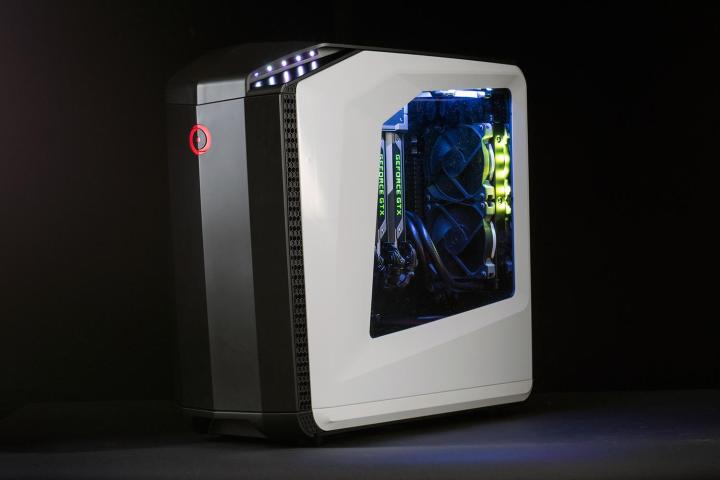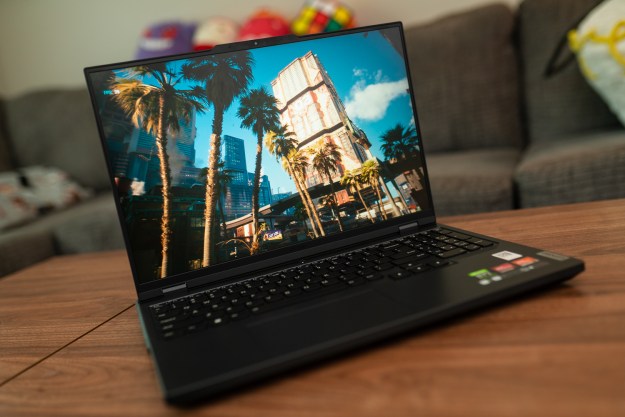
While sales of computers have slid over the last few years, small companies that make custom computers have grown. The dividing line between those who care about PC performance and those who don’t is more distinct than ever. Specialists like Falcon Northwest, Origin and Digital Storm are where it’s at.
Buying a customized PC isn’t the same as buying an off-the-shelf model, however. While you don’t build the system yourself, you are responsible for picking the components, and a mistake could mean spending hundreds, even thousands, more than necessary. Here’s what you should know before you take your system through checkout.
A home to your creation
Readers who are ready to drop five grand or more on an extremely high-end configuration will be able to choose from only one or two models offered by most PC makers, as the top-tier desktops are usually full towers. Everyone else, however, may be wondering what size of desktop is best, whether it’s a mid-tower, full tower, or perhaps a pint-sized PC like the CyberPower Zeus?
Generally, we recommend going with a mid-tower design. Systems labeled as such are usually 16 to 24 inches tall, equally deep, and about eight to ten inches wide. They’re still rather large by modern standards, and they have room inside for multiple hard drives, a pair of video cards and an overclocked processor with a beefy cooler.

Full towers provide even more space, but are often more expensive for any given configuration. Also, they can be so large that finding a place for them in your home becomes difficult. The largest are too tall to comfortably fit under a desk, and too heavy to move frequently.
Mini-PCs like the Falcon Northwest Tiki and Alienware X51 can be a good choice in special situations. They’re particularly adept as home theater computers, or in rooms where there’s very little space. Beware that upgrade-ability is limited, however, and that some variants are loud at load.
When second best is good enough
Once you decide how big you want your system to be, you’ll have to pick out the parts. The rising MSRP displayed alongside your custom configuration can become intimidating, but if you know how to properly build a PC, you can end up with a great rig at a reasonable price.
You may be surprised to hear that the speed of the processor isn’t terribly important – for gaming at least. While we recommend that you stay away from AMD hardware, which is substantially behind Intel, you’re likely to be satisfied by any Core i5 quad core CPU. Testing shows that most games receive no benefit from anything quicker, such as a Core i7 quad core or a Core i7 Extreme.

RAM can also be approached with a similar “good enough” attitude. Modern games run on 8GB of memory with ease, and it’s incredibly simple to add more, so there’s no need to go crazy. Also, RAM speed has almost no impact on game performance, so don’t waste money upgrading to the quickest DIMMs available.
The hard drive you select won’t have much of an impact on framerates either, but it will determine how quickly a game loads. Civilization V benefits massively from a solid state drive, and buying one can cut load times in half (or better) when compared to a mechanical drive. The downside, of course, is cost – a large solid state drive is expensive. Pairing a small SSD (128GB to 256GB) with a mechanical drive can be a good compromise.
You may be tempted to lay down extra cash for a quicker processor, more memory and a faster hard drive in hopes of “future-proofing” your system. However, this is a gamble. Few people can say what the games of tomorrow might demand. If you just can’t shake the itch to go big though, we suggest spending your money on the processor. Adding a hard drive or more RAM is easy, and relatively inexpensive. Replacing the processor is not.
What really matters
Now let’s talk about the most important part of any gaming rig, the beating heart that powers it all, the engine which makes it purr – the video card.
Picking a card can seem like a daunting task, but it all comes down to the resolution at which you run stuff. The math behind a monitor’s pixel count means that what seems like a small increase in resolution actually has a big impact on gameplay. Upgrading from 1080p to 1440p, for example, almost doubles the number of pixels the video card must drive.

Gaming at 1080p doesn’t require ridiculous hardware. A mid-range, single-GPU card (like the Nvidia GTX 760 or Radeon R9 280) will be more than adequate for modern games at high or very high detail. The GTX 760, for example, can pump out 53 frames per second in Crysis 3 at High quality. If you’d like to future-proof a bit, just go a step or two up (from a GTX 760 to a 770 or 780, for example). AMD Radeon cards like the R9 280 and R9 280X are also good choices.
Running games at 2560×1440 is more demanding, and will require the most powerful single-GPU card you can afford (excluding special models, like the Nvidia GTX Titan). Current examples include the Nvidia GTX 780 Ti, and the Radeon R9 290X Uber Edition. Even these cards will barely reach 60 FPS in the most demanding titles, but going with a dual-GPU setup as a means of future-proofing is an expensive proposition.
Anyone planning to play at 4K must be ready to spend some serious cash. You’ll need two very powerful single-GPU cards with at least 4GB of VRAM each, or a powerful dual-GPU card like the Radeon R9 295X2, which also has 4GB of VRAM per GPU. Even then, excellent performance is not guaranteed in the most demanding games when played at their highest settings.
The other parts
We’ve so far covered the most important hardware inside any custom gaming PC, but there are other components you should consider as well. These include the wireless adapter, the sound card and the cooling system.
Wired Ethernet is the best choice for gaming, but wireless is sometimes more convenient. If you do plan to use wireless, we suggest picking up an adapter that supports the latest 802.11ac standard. Any such hardware will also support 802.11n, making it compatible with older routers. However, you’ll need a new 802.11ac router to enjoy the new standard’s speed.

Sound cards are often neglected, but may be worth buying. Motherboards come with integrated sound chips that are good enough for use with cheap speakers and headsets, but anyone who owns high-end audio equipment should upgrade. That said, some custom PC builders only offer the most expensive sound cards. Consider buying an affordable card like the ASUS Xonar DG, and installing it yourself.
Cooling has less to do with performance than it does with noise, as only over-clocked systems need the best equipment. Adding a water cooler to the processor can decrease system noise, as can selecting an upgrade to “quiet” or “silent” case fans, if they’re available. We recommend ticking those check-boxes if fan noise even slightly annoys you.
Warranties and support
Virtually all custom PC builders offer a one-year warranty with most systems, but that may be automatically upgraded to two or three years if you buy a more expensive model. Be sure to double-check this when considering different companies, as it may steer you towards an alternative.
Upgrading the warranty to three years is often an option when a one-year warranty is standard. Whether it’s worthwhile depends on your comfort level, and on the price of the PC you’re buying. Most builders don’t scale warranty cost with the price of a system. A $250 three-year warranty probably isn’t worth getting for a $2,000 rig, but it is a decent choice for one that sets you back five grand.
Also, look into the details of the company’s support offerings. Many provide lifetime technical support with every system. Upgrade plans are becoming common too, and some builders offer free overnight shipping on any claims made within the first year.
Conclusion
A powerful gaming system doesn’t have to cost a fortune. We recently reviewed a version of the Origin Millennium with an as-tested price of nearly $7,000, but that same system can be equipped to game at 1080p for a tad under $2,000 if you “make do” with a quad-core processor, GTX 770 and 8GB of RAM. You’ll end up with an excellent core rig that has plenty of room for upgrades. Enthusiast PCs are better built, and more affordable than ever before.
Hopefully, these tips will help you bring one home that puts a smile on your face while leaving a decent chunk of cash in your bank account.
Editors' Recommendations
- You’ll never guess what this YouTuber built into a PC this time
- A Redditor ‘didn’t know’ about the Steam Deck, so they built their own
- Everything you need to know about buying a GPU in 2024
- Is there a Surfshark free trial? What you need to know
- Prebuilt vs. custom PC: How to know which is right for you


